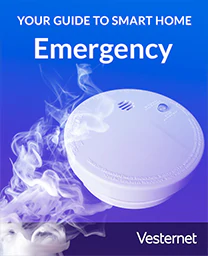EmergencyUpdated a year ago
Smoke alarms and Carbon Monoxide (CO) detectors are essential safety devices that significantly enhance the protection of homes and families from the dangers of fire and toxic gases. The importance of these alarms cannot be overstated, as statistics suggest that more people die from smoke inhalation than from the flames themselves in a fire. Installing these alarms is a straightforward yet highly effective measure to improve safety, providing early warnings and giving occupants the opportunity to escape or address dangerous situations before they escalate.
Understanding the types and functionalities of smoke alarms is vital for selecting the appropriate device for your home. Smoke alarms primarily fall into two categories: Ionization and Optical. Ionisation alarms are designed to detect fast-burning fires but are often prone to false alarms, which can lead to frustration and disconnection by users. In contrast, Optical alarms utilize laser technology to detect larger smoke particles from slower-burning fires and are less likely to trigger false alarms. The best option, however, is the Dual Spectrum Optical sensor, which effectively detects both types of fires and minimizes user annoyance.
Carbon Monoxide is another silent threat present in many households. This colorless, odorless gas can accumulate from various fuel-burning appliances, leading to serious health risks, including unconsciousness or death. A dedicated Carbon Monoxide alarm is critical as it detects dangerous levels of this gas, allowing homeowners to address potential issues before they pose a significant danger to occupants. Having alarms that meet safety certifications, such as the European EN14604 standards, is crucial to ensure reliability.
When considering smoke and CO alarms, building regulations play a pivotal role, particularly for new constructions and major renovations. In the UK, smoke alarms must be mains-powered and interlinked, ensuring that when one alarm sounds, all alarms alert simultaneously. These regulations also recommend using heat sensors in kitchens to avoid false alarms from cooking. Although existing properties lack formal installation requirements, incorporating best practices from the building regulations can enhance overall safety.
For those seeking to integrate smoke and CO alarms into smart home systems, options are available that utilize Z-Wave, Zigbee, or Wi-Fi technologies. These smart devices not only detect hazards but can also communicate alerts through mobile devices, alerting homeowners to potential dangers even when they are not at home. In conclusion, investing in high-quality smoke and CO alarms, understanding the types and functionalities, and adhering to safety regulations ensures optimal protection for families against fire and carbon monoxide hazards.
